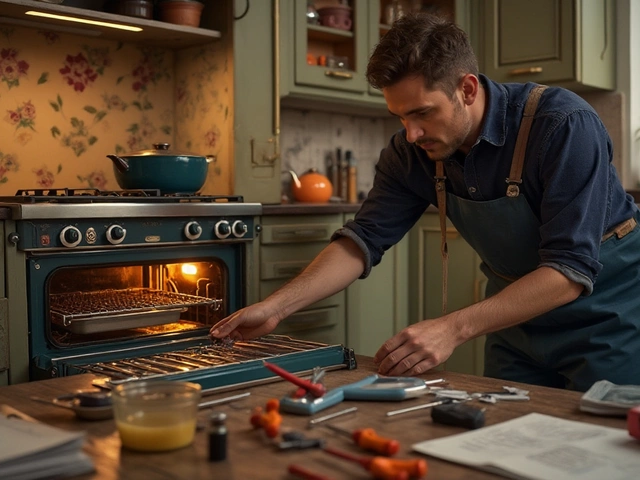Cost Breakdown for Broken Oven Repairs: A Comprehensive Guide
December 22 2024Microwave Failure: Quick Fixes, Common Causes & When to Call a Pro
If your microwave suddenly stops heating, makes weird noises, or refuses to start, you’re probably wondering what went wrong. The good news is many problems are easy to spot and fix. The bad news is some issues need a qualified engineer because of high voltage or gas‑related components. Below we break down the most common reasons a microwave fails and give you a step‑by‑step checklist you can try before picking up the phone.
What Usually Makes a Microwave Quit Working?
Microwaves have a few key parts that can cause a failure if they wear out or get damaged:
- Door latch or safety switch: If the door doesn’t close properly the microwave won’t run. The latch can get sticky or the switch can fail.
- Fuse or circuit breaker: A blown fuse cuts power to the magnetron, the part that actually heats food.
- Magnetron: This is the heart of the oven. When it burns out you’ll get no heat but the fan may still spin.
- Transformer or high‑voltage capacitor: These handle the power surge needed for the magnetron. Faulty parts cause the unit to shut down or flash error codes.
- Control board: Modern microwaves use electronic boards for timing and power control. A bad board can lead to random shutdowns or no response at all.
Most of these parts are inexpensive, but working on them involves high voltage. If you feel unsure, stop and call a certified technician.
Simple Checks You Can Do Right Now
Before you call a pro, try these quick tests. They take only a few minutes and can save you a call‑out fee.
- Confirm power: Plug another appliance into the same outlet to make sure the socket works. If the outlet is dead, reset the circuit breaker.
- Reset the microwave: Unplug it, wait 2 minutes, then plug it back in. This resets the electronics and clears minor glitches.
- Check the door: Open and close the door several times. Look for cracks or warped frames that keep the latch from engaging.
- Inspect the fuse: Some models have a visible fuse behind the control panel. If it looks blackened, replace it with the same rating.
- Clean the interior: Food splatters can block the turntable sensor or the fan. Wipe everything down and remove any burnt debris.
- Listen for the fan: When you press start, you should hear the fan spin even if there’s no heat. No fan usually means a power or motor issue.
If any of these steps fix the problem, great – you’ve saved money and time. If not, move on to the next section.
When to Call a Certified Engineer
Any time you need to open the back panel, replace the magnetron, transformer, or control board, call a qualified gas and appliance engineer. These components store a charge that can give you a serious shock. A certified professional will also check gas connections if your microwave is part of a combination oven‑range that uses gas.
Typical repair costs range from £80 for a simple latch or fuse to £250‑£350 for a magnetron replacement. If the unit is older than 10‑12 years, compare the repair quote with the price of a new energy‑efficient model. Newer microwaves use less electricity and often come with longer warranties.
In short, start with the easy checks, keep safety first, and don’t hesitate to call an expert when high‑voltage parts are involved. A properly repaired microwave will heat your leftovers quickly and safely for years to come.
 10 Jul
10 Jul
Microwave Failure: The Most Common Causes and How to Spot Them
Discover why microwaves stop working, what parts fail the most, and how to spot trouble early. Get practical tips to keep your microwave running strong.
Read More...



